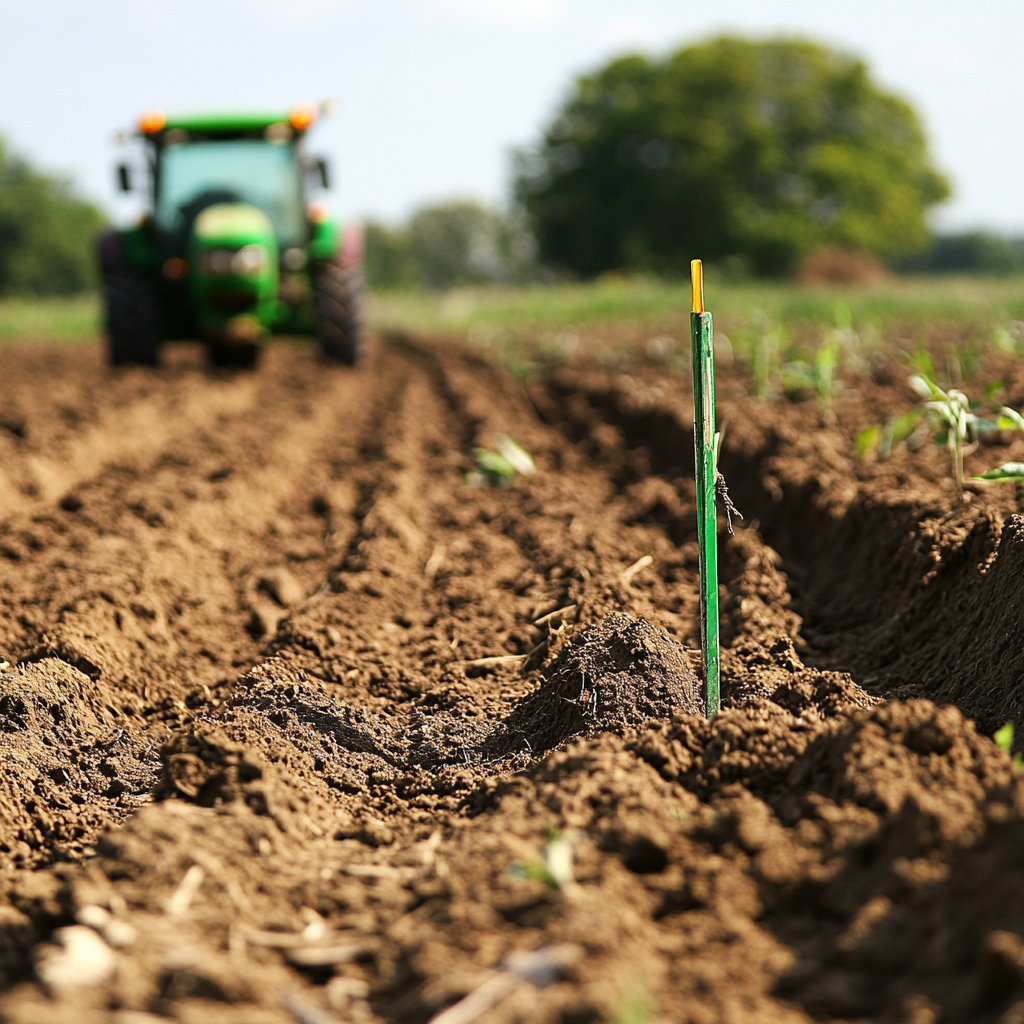Why Soil Moisture Measurement Matters
Soil moisture might not look like much at first glance, but it’s a powerful indicator of soil health and productivity. It directly influences crop growth, irrigation efficiency, and even the stability of building foundations. For farmers, landscapers, researchers, and environmental engineers, knowing exactly how much water is in the soil can mean the difference between success and failure.
In agriculture, soil moisture measurements help prevent both overwatering and underwatering—two costly mistakes that affect yields and resource efficiency. In environmental monitoring, it helps detect drought patterns and assess climate change impacts. And in construction, it plays a critical role in evaluating ground stability.
The good news? Whether you prefer hands-on, lab-based precision or cutting-edge, wireless automation, there’s a soil moisture measurement method to match your needs.
Understanding Soil Moisture
What is Soil Moisture?
Soil moisture is simply the amount of water present in the soil pores between soil particles. This water can exist in three main forms:
-
Gravitational Water – Drains quickly through soil after rainfall or irrigation; not readily available to plants.
-
Capillary Water – Held in soil pores; easily available for plant roots to absorb.
-
Hygroscopic Water – Tightly bound to soil particles; unavailable to plants.
Why Monitor Soil Moisture?
Monitoring soil moisture is vital for:
-
Irrigation Planning – Applying water only when necessary reduces waste and improves plant health.
-
Drought Management – Early detection of moisture stress can save crops.
-
Environmental Studies – Tracking water cycles and soil-plant interactions.
Categories of Soil Moisture Measurement Methods
Soil moisture measurement methods generally fall into two categories:
-
Direct Methods – Physically removing and measuring the water in a soil sample.
-
Indirect Methods – Using instruments to infer soil moisture content based on electrical, thermal, or nuclear properties.
Gravimetric Method – The Gold Standard
How It Works
This classic method involves:
-
Collecting a soil sample.
-
Weighing it to get the wet mass.
-
Drying it in an oven at 105°C for 24 hours.
-
Weighing it again to get the dry mass.
-
Calculating water content as the weight loss.
Advantages
-
Extremely accurate.
-
Serves as a reference for calibrating other instruments.
Limitations
-
Time-consuming.
-
Destructive—sample cannot be reused.
-
Not suitable for real-time monitoring.
Best Use Cases
-
Laboratory analysis.
-
Benchmark testing.
Tensiometer Method
How It Works
A tensiometer consists of a water-filled tube with a porous ceramic cup at one end and a vacuum gauge at the other. It measures the tension with which water is held in the soil—the harder the pull, the drier the soil.
Advantages
-
Simple and cost-effective.
-
Provides real-time data.
Limitations
-
Only works in wet to moderately moist soils (up to ~85 centibars).
-
Needs regular maintenance and refilling.
Best Use Cases
-
Irrigation scheduling in sandy or loamy soils.
Electrical Resistance Blocks
How It Works
Porous blocks (often gypsum) are buried in soil. As the soil moisture changes, so does the block’s electrical resistance, which is measured by a connected device.
Advantages
-
Affordable and durable.
-
Suitable for long-term field use.
Limitations
-
Requires calibration.
-
Affected by soil salinity.
Best Use Cases
-
Long-term agricultural monitoring.
-
Budget-conscious projects.
Time Domain Reflectometry (TDR)
How It Works
TDR sends an electromagnetic pulse along metal rods inserted into the soil. The time taken for the pulse to return reflects the soil’s dielectric constant, which changes with moisture content.
Advantages
-
High accuracy.
-
Works in a wide range of soils.
Limitations
-
Expensive.
-
Requires trained operators.
Best Use Cases
-
Research projects.
-
Precision agriculture.
Frequency Domain Reflectometry (FDR)
How It Works
Similar to TDR but measures at a specific frequency rather than pulse time.
Advantages
-
Continuous monitoring capability.
-
Robust and adaptable.
Limitations
-
Calibration required.
-
Sensitive to salinity.
Best Use Cases
-
Automated irrigation systems.
-
Large-scale farm monitoring.
Neutron Probe Method
How It Works
A neutron probe emits fast neutrons into the soil. These neutrons collide with hydrogen atoms (primarily from water), slowing down in the process. A detector counts the slow neutrons, and this count correlates with moisture content.
Advantages
-
Accurate even at depth.
-
Long-term deployment possible.
Limitations
-
Requires strict radiation safety protocols.
-
High initial cost.
Best Use Cases
-
Large-scale agricultural research.
-
Government monitoring programs.
Remote Sensing & Satellite-Based Techniques
How It Works
Satellites or drones equipped with microwave sensors measure surface soil moisture by detecting emitted radiation, which varies with water content.
Advantages
-
Covers large areas.
-
Ideal for inaccessible or hazardous regions.
Limitations
-
Lower resolution than ground sensors.
-
Expensive and requires technical expertise.
Best Use Cases
-
Climate research.
-
Regional water resource management.
Capacitance Sensors & IoT Solutions
How It Works
Capacitance probes measure the soil’s dielectric constant through an electric field between electrodes. IoT versions transmit real-time data wirelessly.
Advantages
-
Continuous monitoring.
-
Integrates with smart farming systems.
Limitations
-
Calibration needed.
-
Sensor performance may degrade over time.
Best Use Cases
-
Greenhouses.
-
Smart irrigation systems.
Comparing the Methods – Choosing the Right Approach
Here’s a quick comparison:
| Method | Accuracy | Cost | Maintenance | Best Use Case |
|---|---|---|---|---|
| Gravimetric | High | Low | High | Lab analysis |
| Tensiometer | Medium | Low | Medium | Irrigation scheduling |
| Electrical Resistance | Medium | Low | Low | Long-term monitoring |
| TDR | High | High | Medium | Research & precision farming |
| FDR | High | Medium | Medium | Automated irrigation |
| Neutron Probe | High | High | High | Large-scale research |
| Remote Sensing | Medium | High | Low | Climate & regional monitoring |
| Capacitance/IoT | High | Medium | Medium | Smart agriculture |
Future Trends in Soil Moisture Measurement
-
AI & Predictive Analytics – Systems that predict when soil will dry out, improving irrigation timing.
-
Autonomous Drones – Equipped with hyperspectral imaging for rapid field scans.
-
Climate-Smart Agriculture – Integrated data from weather forecasts, soil sensors, and crop growth models.
Conclusion
Soil moisture measurement is no longer just a manual task for scientists—it’s now a key component of smart farming, environmental monitoring, and sustainable water management. Whether you choose the accuracy of the gravimetric method, the convenience of a tensiometer, or the high-tech capabilities of satellite imaging, the best method is the one that fits your purpose, budget, and environment.
By adopting the right tools and techniques, you can improve yields, save water, and protect the environment—drop by drop.
FAQs
1. Which soil moisture measurement method is most accurate?
The gravimetric method is considered the gold standard for accuracy, but it’s best suited for lab use.
2. How often should I measure soil moisture for crops?
During the growing season, measure at least weekly—or daily in high-value crops.
3. Can satellite-based measurements replace ground sensors?
Not entirely. Ground sensors provide more precise local data, while satellites offer regional trends.
4. What’s the cheapest way to measure soil moisture?
Electrical resistance blocks and tensiometers are affordable and effective for many applications.
5. How do I calibrate soil moisture sensors?
Calibration typically involves comparing sensor readings with gravimetric measurements under the same soil conditions.

